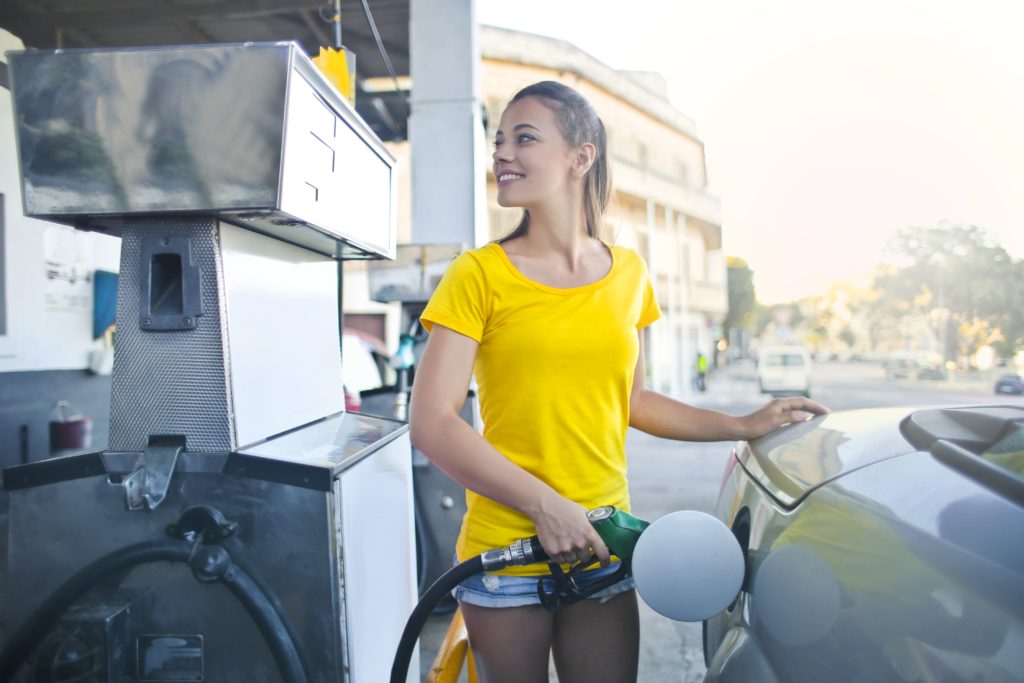
Save money on gasoline is difficult when gas prices continue to rise. Everyone is looking for ways to cut costs. Even if you aren’t taking a long trip this summer, driving to work and home every day and running errands can quickly eat up the fuel in your gas tank. Check out these key tips on how to reduce your fuel burn this summer.
1. Use a Gas Rewards Card
If you use a credit card frequently, a gas rewards card may help your wallet. Gas rewards cards are credit cards that give you a discount on gasoline when you make fuel purchases with the card. The amount of the discount can vary depending on the specific rewards program.
Some offer a flat cash-back rate at the pump, while others offer discounts based on your spending level. Some cards offer up to 5% back on gasoline purchases. If you use a rewards card, pay off the balance in full each month. Otherwise, any money you save at the pump would be offset by interest fees on your balance.
2. Maintain Your Car
Simple car maintenance can increase fuel efficiency and reduce wear and tear on your car. Keep your tires properly inflated, replace dirty air filters, and change your oil regularly. When tires are underinflated, your car must work harder and burn more fuel to go the same distance. The proper inflation pressure is listed on the tire information sticker in your vehicle’s door jamb or in the owner’s manual.
Replacing or cleaning clogged air filters and air filters on vehicles with fuel-injected or computer-controlled gasoline engines will also improve your gas mileage and make it easier for your engine to breathe.
3. Use Gas Saving Technology
Many people do not realize that there are many types of devices available to help you save money on gas. These include fuel injectors, electronic sensors, and other devices that can be used in combination with your car’s engine to reduce fuel consumption. Read up before investing, though, since some sources say these devices don’t work while some car owners swear by them.
4. Save money on Gasoline by Changing Your Driving Habits
Simply altering how you drive can help improve gas mileage. When possible, plan your errands so you don’t make multiple stops, which will waste gas as you start and stop your engine. If possible, combine errands with trips to work or school. Avoid aggressive driving and speeding. These behaviors not only waste gas but also put everyone on the road in danger. Use cruise control when it’s safe to do so; it helps you maintain a steady speed on the highway and can boost your fuel economy by 15-30%, according to Cars.com.
Avoid long warm-ups or idling. Warming up a vehicle for more than 30 seconds before driving away does not improve engine performance and wastes fuel. Turn off the engine if you expect to be parked for more than a minute, such as at drive-up restaurants and toll booths.
5. Get Gas Where Prices Are Lowest
Prices fluctuate throughout the week and month, so be aware of where gas is cheapest in your area. You can use an app like GasBuddy to find the closest station with the lowest prices. Don’t drive many miles to fill up your gas tank as the extra mileage wastes gas, too.
6. Consider an Eco-Friendly Filling Station
In Germany and the Netherlands, alternative fuel stations are commonplace. In the U.S., however, only about 1% of all filling stations offer an eco-friendlier option such as E85 (15% gasoline, 85% ethanol) or biodiesel. These fuel options are better for the environment and less expensive than traditional gasoline.
While E85 or biodiesel may not be available in your area, it’s worth looking into if you live near a city. You can find where alternative fuel stations are located by visiting FuelEconomy.gov or AFDC Alternative Fueling Station Locator.
7. Save Money on Gasoline by Fueling Early in the Day When Prices Are Lowest
The next time you fill up, do so early in the day when prices are lowest. When it’s hot outside, fuel expands and the pressure at the pumps is higher. During the morning hours, there is less expansion, meaning you get more fuel for your money.
The next time you’re looking for a gas station, use one without a convenience store attached. Companies that own these stores have to pay rent on them and often charge more per gallon to compensate.
The Bottom Line
With gas prices on the rise, extra savings can go such a long way. Every little bit helps when you’re trying to make ends meet. Keep these money-saving tips in mind when buying your next tank of gasoline. Saving monthly on gasoline costs can add up to big savings over a year. You can even save more by driving in a much greener fashion.

Speak Your Mind